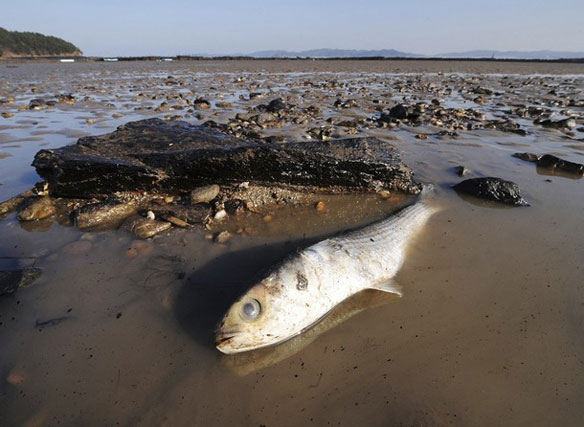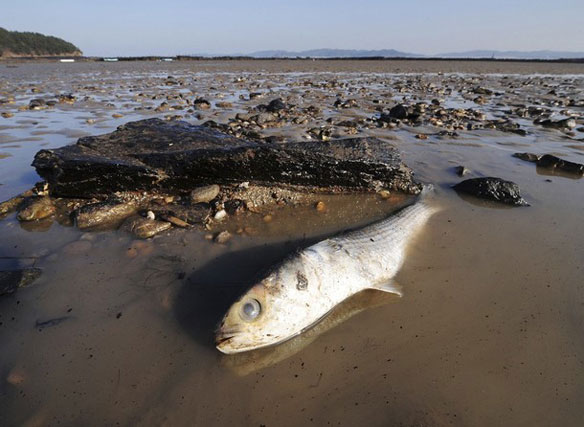
By Harry Weber, AP
Oil industry and government officials could get caught flat-footed again by another deep-water blowout in the coming months because they have yet to incorporate many of the lessons learned during the BP disaster, experts inside and outside the business tell The Associated Press.
For one thing, it could be another year before a bigger, better cap-and-siphon containment system is developed to choke off leaks many thousands of feet below the surface. Also, existing skimmers still don’t have the capacity to quickly suck up millions of gallons of oil flowing at once.
In interviews with the AP, environmental experts, industry veterans and government officials also said the industry needs better technology and more thorough testing and analysis to prevent blowouts from happening in the first place.
And despite an overhaul of the federal agency that regulates the industry, there are lingering doubts about whether the government can effectively police Big Oil at the same time it relies on the industry for revenue.
“It’s going to take five years before all those lessons are fleshed out and can be implemented,” warned Louisiana State University environmental sciences professor Ed Overton.
The government’s moratorium on deep-water drilling in the Gulf of Mexico is set to expire Nov. 30 and could be lifted even sooner amid pressure from the industry and its allies.
BP signaled last week that it realizes there is still a lot of work to do, firing a top official responsible for deep-water wells. It also welcomed a new CEO on Friday, the first American ever to lead the British company.
Erik Milito, director of upstream and industry operations for the industry group American Petroleum Institute, acknowledged room for improvement. But he insisted that the industry learned from the BP disaster.
“If this happens again, the difference will be it will get capped a heck of a lot quicker,” Milito said. “It won’t take 90 days again.”
Exxon Mobil Corp. is leading a coalition of oil companies building a one-of-a-kind system to contain an oil leak in up to 10,000 feet of water — twice the depth of the BP blowout. BP recently joined the $1 billion project and agreed to submit the equipment it used to eventually kill its runaway well.
But it could be 16 months before the system is completed, tested and ready to be used. Drawings of the proposed system show a cap and a series of undersea devices — including cables, a riser, a manifold and a piece of equipment that would pump dispersant. Lines would be hooked up to vessels on the surface.
Cleaning up oil once it reaches the surface also still poses problems. Even with a fleet of large skimmers used during the BP crisis, the process was slow-going at times. Industry experts and others are pressing for development of more effective skimmer technology.
“We have to do whatever we can to get the most out of those technologies,” Milito said.
Industry and the government are also faced with trying to prevent such a disaster in the first place.
In its own report on the blast, BP acknowledged among other things that it misinterpreted a key pressure test of its well before the explosion. BP, which was leasing the rig from Transocean, also blamed employees from both companies for failing to respond to other warning signs that the well was in danger of blowing out.
Testimony before a federal investigative panel showed that real-time data from the rig was available to BP managers on shore, but not to Transocean. And two men who were key to the successful operation of the rig — one for BP and one for Transocean — rarely had contact with each other, according to testimony.
Elgie Holstein, a former Energy Department official who now works for an environmental group, said it is a problem that real-time data on a well’s ability to withstand pressure is usually only transmitted from the rig to the headquarters of the company in charge of the well. He said data should be made available more widely to industry experts, a safety consortium or government safety officials so they can determine if the readings are being interpreted correctly.
Energy Secretary Steven Chu recently cited the need for more effective sensors in key components such as blowout preventers that can quickly detect whether the devices are functioning properly. In the BP episode, the blowout preventer failed to clamp off the flow of oil. Investigators are trying to figure out why.
Preventing another such disaster is going to require a change in the industry’s safety culture, some experts say.
Last week, BP’s new CEO announced creation of a special unit to police safety practices throughout the company.
“Our response to the incident needs to go beyond deep-water drilling,” Bob Dudley said. “There are lessons for us relating to the way we operate, the way we organize our company and the way we manage risk.”
Rich Haut, an engineering expert who previously worked as a well technology manager for Exxon and as a deep-water technical manager at Halliburton, said it is important that all oil and gas companies develop a culture of safety and “make sure everyone from the executive suite to the rig floor understand that.”
Because of the moratorium, exploratory drilling on 33 deep-water rigs in the Gulf was put on hold.
By law, BP had a major role in cleaning up the spill. But retired Coast Guard Adm. Thad Allen, who was in charge of the government’s response to the crisis, recently proposed that in the event of another such disaster, a third party from the oil and gas industry that does not have a stake in the polluter’s profits coordinate the cleanup.
Allen did not elaborate except to say that it may require a change in federal law. In Congress, there has been no movement on the idea.
The government’s relationship with the very companies it is supposed to regulate has also raised questions.
In the wake of the BP spill, the Obama administration overhauled the Minerals Management Service, renaming it the Bureau of Ocean Energy Management and separating its conflicting responsibilities for both policing the oil and gas industry and collecting billions in royalties from it.
But the commission appointed by the President to investigate the spill has questioned whether the government has truly eliminated the conflict. It was noted that the reorganization would have the bureau responsible for managing leases along the Outer Continental Shelf and the bureau responsible for enforcing safety and environmental standards report to the same person.
“I won’t be satisfied until the government demonstrates a continued willingness, not just a brief willingness, to be a tough cop on the beat, and the industry delivers on its promises that something like the BP blowout will never happen again,” said Holstein, the former Energy Department official.









